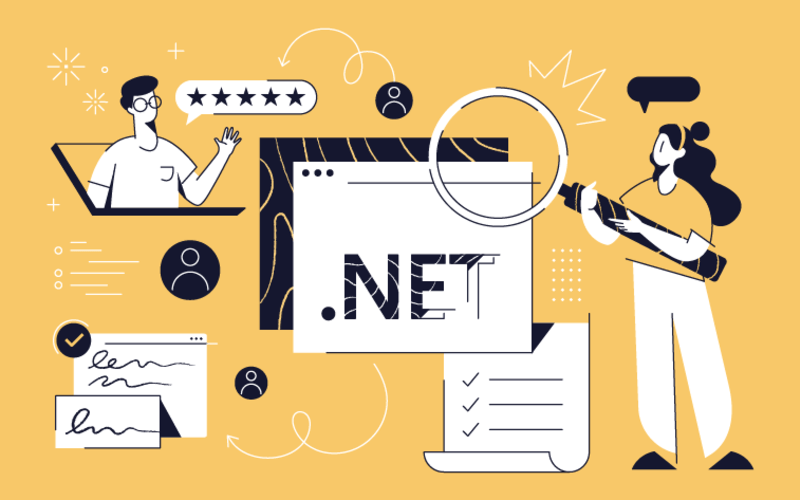Employer branding represents managing your reputation as an employer toward employees, job seekers, stakeholders, and others. This type of branding reflects not only the company culture but, more importantly, how you as an employer treat the rest of the company in the long run.
If you want to know employer branding, you can also define it by asking employees and other collaborators to give their opinion about you as a boss or brand/company in general. You get the meaning by now.
It is a known truth that employer brands must not stagnate and should react, adapt and respond to all potential challenges, upgrades, and new conditions. Many questions arise when someone mentions ‘employer branding’ and its changes. When is a change needed? Which telltale signs signal it is time for brand or branding strategy changes? How often does such a change occur, or should it happen?
It’s no harm to know and anticipate possible challenges and issues that could likely happen in every brand – understanding challenges in advance makes employers prepare better to sustain the branding and even make it better.
It probably does if you are wondering whether your employer branding needs a change or a ‘refreshment’ of some kind. There is no harm in constantly being alert and open to changes and novelties – times change fast, and so do employer brands. Audiences change, new generations dictate certain new things, and businesses must follow all of this at the same pace.
Below are some signs that your employer branding needs to change, or at the very least, adapt to new conditions and undergo upgrades.
A significant change happened within the company
It is normal and somewhat expected that a company undergoes significant shifts and changes. If this happened, it could mean that the culture and overall mission of the brand have changed too.
Why did such a change happen? Did the Employer Value Proposition (EVP) change for the better, or worse? Did the company grow at a pace that wasn’t predicted? Was there a merging of the brand with another? Is there a need to merge or grow alone from now on?
Any significant milestone within the branding is the change we talk about, and when you can clearly state that some change happened, yes, it is time for a branding upgrade.
Make sure your business and employer branding still reflect the values it was based on, but adapted to the new conditions that naturally occur with businesses. As you focus on the novelty, do not forget what was the basis before it – promote both accordingly.
The competition is different now
A strong employer brand comes with a healthy competition relationship with the others. As we all know, growth doesn’t come without trial and error, or the preferred scenario of being alert when others do something well.
But, when the competition changes, it means they have upgraded somehow, and your employer branding lacks that thing or could incorporate it for its improvement too.
That was one possible scenario. But another likely to happen is competitors ‘stealing’ your best candidates, talent, or similar.
Consider what is the thing your employer branding lacks that retention of talent seems delicate to execute. Is it the benefits offered? Or a much better company culture? Maybe room for self-improvement and skills upgrading opportunities?
Observe what the other competitors are doing well and start implementing those examples. If someone reaches the goal you need to reach, they ‘refresh’ and grow the employer branding better and faster.
You can’t attract the best talent you’re hoping for
At a certain point, no matter how well-written job descriptions you have, it seems new talent doesn’t come in, and even worse, already employed people start to leave — usually the best talent. You begin to notice more open positions with your company than ever.
These are clear signs that you, as an employer, need to focus on improvements and thus make your branding stand out by not ignoring such things. It is alarming when good workers leave, and new ones (just as good or better) do not come in to fill the gaps for you.
Pay attention to how you treat the employees. Are most of them waiting forever to get a promotion or a raise? Is it hard for workers to ask for days off or justified absence from work? Is there a high turnover of employees? Or perhaps the work environment is unhealthy considering various aspects within the teams?
What you need is to create a poll and have all employees included in the poll, use exit interviews and see why employees leave. In this way, you will also see what existing employees would like to see as an upgrade or change in the workplace. Employee engagement can always use an improvement, and it is useful overall for the employer branding.
Always remember that happy workers are not in a rush to leave. Those eager to go elsewhere already speak for the employer branding itself.
Your current brand is outdated
This one should be easy to understand – when a company brand is outdated, clear signs point to it.
For example, you adjusted to a particular routine or strategy for promotion. You got accustomed to one type of production of goods and services, and there hasn’t been a novelty introduced for a long time.
Or simply look at how the dynamic goes within the teams of workers – if employees don’t have occasional challenges and upgrades to incorporate into their daily work, something needs to change.
You can rebrand by redefining the company's mission and vision in some aspects. Perhaps change some promotional designs or the company slogan/motto, and present this to the public through some novelty your company introduces. You're on the right track as long as you include something that hasn’t been included so far.
Simple words do not describe your brand
A strong employee brand can speak for itself if everything is handled the right way continuously and if workers are happy and productive. But, if you need to describe your brand with complex definitions, or you cannot do a simple pitch line to convey a concise point for your brand, the core of it, something is wrong.
The same applies to workers; it is not a great sign if someone cannot precisely explain their work for a company. Employees feeling semi-lost regarding the branding goal and mission is just as serious as you as the employer not defining it or knowing it.
Think big, but convey it with minimalism. People like brief and straight-to-the-point explanations, always.
You can’t keep pace with the younger generation of employees
As times change, generations change too, and values in the workplace also change. If you compare this era to a previous one, you will notice how workplace values and employer branding changes over time as new generations introduce new ways of doing things.
For example, suppose we refer to millennials and Gen Z employees for instance. In that case, we will see they all think differently, were upbrought differently, and they shape(d) workplace culture too.
New generations emphasize the importance of remote work or the need for flexible hours, promoting positive mental health environments in the workplace and similar. So, rigidness and old ways of working no longer belong in modern times.
If your company still does not accept new, more flexible, or different working methods, stop and rethink your branding. It is not a good sign if you lack diversity and inclusion and purposely shun certain nationalities and races. If your employees are always on the brink of burnout, with overtime working and loads of pressure, the work-life balance is off, and you need to consider changes in your employer branding.
The company faces financial challenges
If you are wondering why you cannot attract employees or what’s wrong with your hiring process, you might have a reason to worry in this case.
No matter how big the talent pool is, if your branding and company struggle with financial issues, it cannot be hidden, and you cannot attract top talent. Every candidate will see what you offer or accept as a proposed compensation, and by that, people can somewhat judge in advance whether the company has a future or not.
Perhaps thinking of new hires is a big stretch because when branding goes through a financial problem, old employees start to leave, or are laid off, unfortunately. With this, clients begin to leave and go with their business needs elsewhere.
You need to reevaluate all financial aspects of your business, whether or not you need to take a risk and invest in something to improve your brand or simply reorganize the capital thoroughly.
You are not transparent enough
Nobody proposes constantly revealing all the ins and outs or exposing everything about your company. But, it is incredibly vital to share certain information with everyone to work toward a good employee experience.
When workers are kept in the dark about the company's future or anything from the smaller perspectives, it will also reflect in the teamwork and the team culture. A team that’s not cohesive does not make a good impression on the employer branding.
Try to apply this to a new job seeker, and you’ll see that everyone, new hire or not, wants to inquire about their future with the company and its future itself. When employers are honest with their employees about big and small picture business information, it instills trust, confidence, and a level of respect that employees value and return with good work and attitude.
Be clear about the mission and vision, big picture and small picture things. Methodically and tactfully announce changes, whether good or not so good—be diplomatic and genuinely invested, but never secretive.
Make sure you have regular meetings with everyone, whether group sessions at once or separate meetings. Everyone should have a voice for certain things or participate in group discussions relevant to the job positions and company overall.
How to create a winning team culture for modern tech teams
Learn to build and nurture cohesion, trust, and culture in hybrid and distributed teams.
The takeaway
Your employer brand would need an upgrade if you noticed something from above happening in your current business. A positive employer brand does not suffer too much from the mentioned points, but it takes continuous work and efforts to avoid these issues down the road.
You can reevaluate your branding issues, create strategies for improvements, and regularly check career pages to stay up to date with hiring aspects – as long as you are open to needed changes and new ways of working, your employer branding will be much safer.





